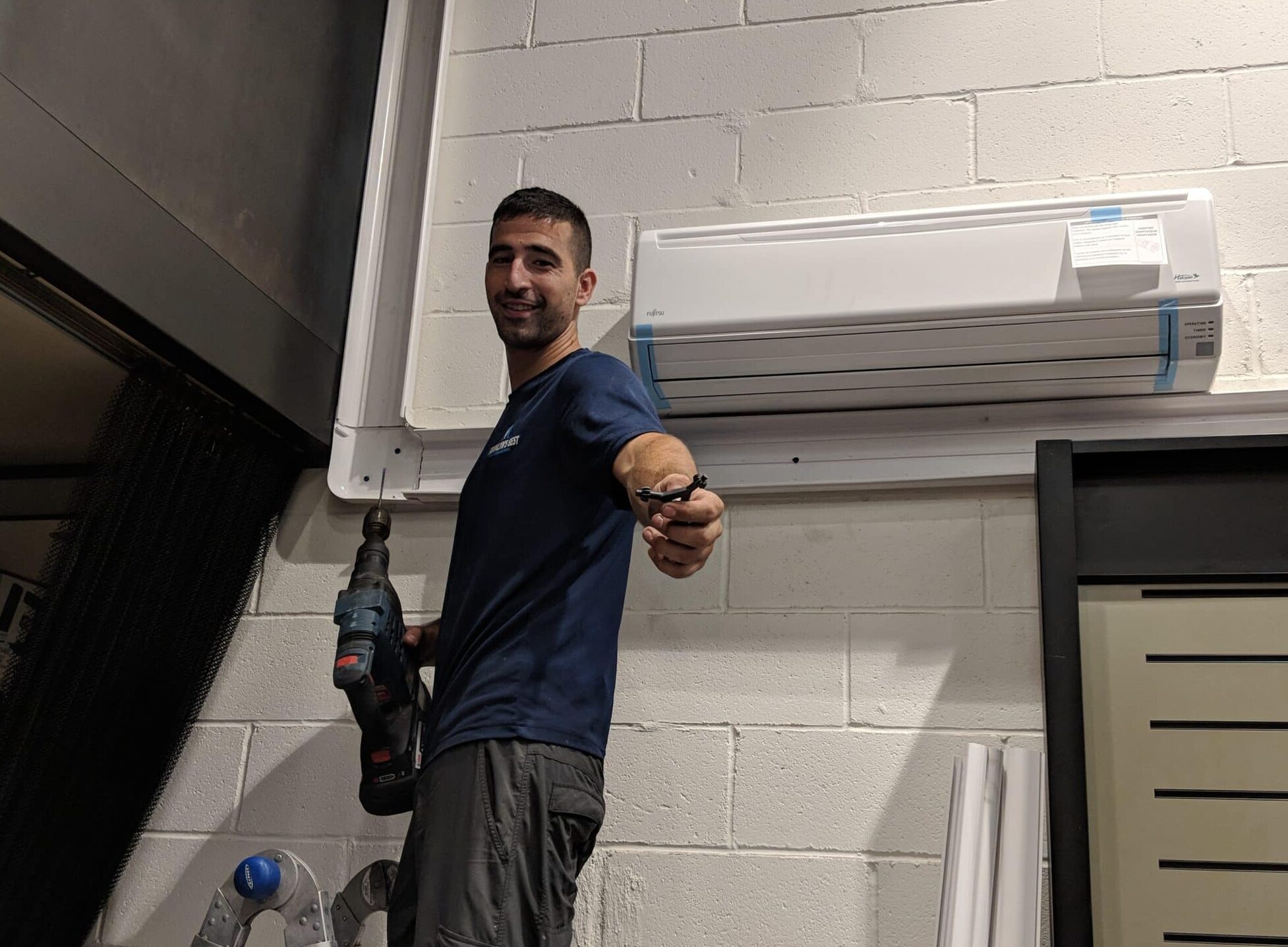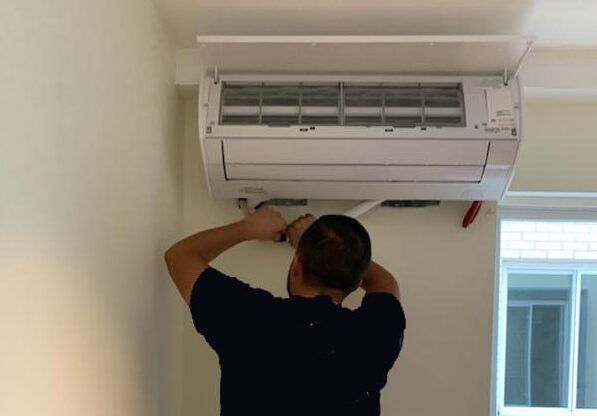2023 & 2024 Heat-pump Tax Rebate information and credit form
The federal government has a tax credit for qualifying heat pump installations.
Please read through the info on this page to see if you have the system that qualifies for the $2000 Tax Credit for 2023 taxes.
If you make qualified energy-efficient improvements to your home after Jan. 1, 2023, you may qualify for a tax credit up to $3,200. You can claim the credit for improvements made through 2032.
For improvements installed in 2022 or earlier: Use previous versions of Form 5695.
Beginning Jan. 1, 2023, the credit equals 30% of certain qualified expenses, including:
- Qualified energy efficiency improvements installed during the year
- Residential energy property expenses
- Home energy audits
There are limits on the allowable annual credit and on the amount of credit for certain types of qualified expenses. The credit is allowed for qualifying property placed in service on or after Jan. 1, 2023, and before Jan. 1, 2033.
The maximum credit you can claim each year is:
- $1,200 for energy property costs and certain energy efficient home improvements, with limits on doors ($250 per door and $500 total), windows ($600) and home energy audits ($150)
- $2,000 per year for qualified heat pumps, biomass stoves or biomass boilers
The credit has no lifetime dollar limit. You can claim the maximum annual credit every year that you make eligible improvements until 2033.
The credit is nonrefundable, so you can’t get back more on the credit than you owe in taxes. You can’t apply any excess credit to future tax years.
Who qualifies
You may claim the energy efficient home improvement credit for improvements to your main home. Your main home is generally where you live most of the time.
For the energy efficiency home improvement credit, the home must be:
- Located in the United States
- An existing home that you improve or add onto, not a new home
In most cases, the home must be your primary residence (where you live the majority of the year). You can’t claim the credit if you’re a landlord or other property owner who doesn’t live in the home.
Business use of home
If you use a property solely for business purposes, you can’t claim the credit.
If you use your home partly for business, the credit for eligible clean energy expenses is as follows:
- Business use up to 20%: full credit
- Business use more than 20%: credit based on share of expenses allocable to nonbusiness use
Frequently asked questions about energy efficient home improvements and residential clean energy property credits
Qualified expenses and credit amounts
To qualify, home improvements must meet energy efficiency standards. They must be new systems and materials, not used. Some improvements have specific credit limits as follows.
Building envelope components
To qualify, building envelope components must have an expected lifespan of at least 5 years. Qualified components include new:
- Exterior doors that meet applicable Energy Star requirements. Credit is limited to $250 per door and $500 total.
- Exterior windows and skylights that meet Energy Star Most Efficient certification requirements. Credit is limited to $600 total.
- Insulation and air sealing materials or systems that meet International Energy Conservation Code (IECC) standards in effect at the start of the year 2 years before installation. For example, materials or systems installed in 2025 must meet the IECC standard in effect on Jan. 1, 2023. These items don’t have a specific credit limit, other than the maximum credit limit of $1,200.
Labor costs for installing building envelope components don’t qualify for the credit.
Home energy audits
A home energy audit for your main home may qualify for a tax credit of up to $150.
In order to qualify, the home energy audit must:
- Include a written report and inspection that identifies the most significant and cost-effective energy efficiency improvements with respect to the home, including an estimate of the energy and cost savings with respect to such improvement, and
- Be conducted and prepared by a home energy auditor
Starting in 2024, the following additional requirements must be met:
- The inspection must be conducted by a qualified home energy auditor, defined as an individual who is certified by one of the qualified certification Programs listed on the Department of Energy certification programs for the Energy Efficient Home Improvement Credit (Section 25C) at the time of the audit, or under the supervision of a qualified home energy auditor;
- The written report must be prepared and signed by a qualified home energy auditor, be consistent with industry best practices, and include:
- The qualified home energy auditor’s name and relevant employer identification number (EIN) or other type of appropriate taxpayer identifying number, if the auditor does not have an EIN;
- An attestation that the qualified home energy auditor is certified by a qualified certification program; and
- The name of such qualified certification program
We recommend home energy auditors apply for and receive an EIN if they do not already have one. Apply for an EIN Online.
For more information, see Notice 2023-59 PDF.
Residential energy property
Residential energy property that meets the Consortium for Energy Efficiency (CEE) highest efficiency tier, not including any advanced tier, in effect at the beginning of the year when the property is installed qualifies for a credit up to $600 per item. Costs may include labor for installation.
Qualified property includes new:
- Central air conditioners
- Natural gas, propane, or oil water heaters
- Natural gas, propane, or oil furnaces and hot water boilers
Oil furnaces or hot water boilers can also qualify through other efficiency criteria.
Costs of electrical components needed to support residential energy property, including panelboards, sub-panelboards, branch circuits, and feeders, also qualify for the credit if they meet the National Electric Code and have a capacity of 200 amps or more. There is a limit of $600 per item.
Heat pumps and biomass stoves and boilers
Heat pumps and biomass stoves and boilers with a thermal efficiency rating of at least 75% qualify for a credit up to $2,000 per year. Costs may include labor for installation.
Qualified improvements include new:
- Electric or natural gas heat pumps
- Electric or natural gas heat pump water heaters
- Biomass stoves and boilers
Subsidies, rebates and incentives
When calculating your credit, you may need to subtract subsidies, rebates, or other financial incentives from your qualified property expenses because they’re considered a purchase price adjustment.
Public utility subsidies for buying or installing clean energy property are subtracted from qualified expenses. This is true whether the subsidy comes directly to you or to a contractor on your behalf. However, utility payments for clean energy you sell back to the grid, such as net metering credits, don’t affect your qualified expenses.
Rebates are subtracted from qualified expenses if all of these apply:
- The rebate is based on the cost of the property
- It comes from someone connected to the sale such as the manufacturer, distributor, seller or installer
- It isn’t given as payment for services you provide
State energy efficiency incentives are generally not subtracted from qualified costs unless they qualify as a rebate or purchase-price adjustment under federal income tax law. Many states label energy efficiency incentives as rebates even though they don’t qualify under that definition. Those incentives could be included in your gross income for federal income tax purposes. See Notice 2013-70, IRB 2013-47.
How to claim the Energy Efficient Home Improvement Credit
File Form 5695, Residential Energy Credits Part II, with your tax return to claim the credit. You must claim the credit for the tax year when the property is installed, not merely purchased.
Our Services

Mini-Split Replacements

Split AC Installation

Split AC Maintenance
Additional Services
Customers reviews
Amazing!! I was so upset that the problem was caused by throwing a box in the closet, but the fact that my AC was fixed in 5 minutes was priceless. Especially during this heat wave. This company gets 5 stars because:
- The $120 can be applied if I have to call them back
- The technician called hours later to make sure we didn’t have a leak and to check that the unit was functioning properly.
- I called on a Sunday afternoon and they came the next day.
Richard K
I can’t say enough good things about Brooklyn’s Best AC. I called them on a Wednesday because all our AC units had been flashing error codes and not turning on during a heat wave. They came out on Thursday to take a look at the problem ; they provide a 4 hour window, but arrived within the first 30 minutes – first good sign. Within 10 minutes the technician had the problem diagnosed and the parts ordered. He said 3-4 day business day turnaround for the parts, but on Monday (1 business day after the first visit) I get a text saying “there’s a storm tomorrow, I want to get all the work done today so I’m going to go pick up the parts”. One technician arrived soon after and got started, followed by another tech. with the remaining parts. Within an hour the ACs were blasting cold air as if nothing had happened. Huge thanks for going out of your way to get the repair done early and with high quality. Also thank you for observing all COVID-19 prevention guidelines : masks, gloves, etc. I hope I don’t need to get other major HVAC repaired any time soon, but if I do, I will be picking BB-COND.
Ashley G
Exceptional service – we had them replace 2 PTAC units back in 2017 and have relied on them to help service them and other PTACs- they are fair, prompt to respond, and knowledgeable about the units and how they work. I trust them entirely and highly recommend them next time anyone needs assistance.
Michael B
Frequently Asked Questions
-
How does a split AC work?
Mini-splits have five main components:
- Indoor air-handler.
- Outdoor condenser.
- The line-sets that have Freon inside of them connect the indoor & outdoor units.
- Control wires, power the indoor unit, and are connected to the outdoor unit.
- Drain-lines, remove the condensation from the indoor air-handler.
-
The average cost to install a split AC system?
This is a very hard question for anyone to answer without knowing the following information first:
- The # of units you need to have installed
- The time and labor to install them
- The type of system you want to install, there are many different to choose from.
- Location, each location has its own challenge when installing a split system
- The only way to get pricing is by having someone from our team come out and inspect the installation location to provide you with the cost of the work.
-
What is are the best Mini-split AC systems to install?
#1 Fujitsu have been making split AC systems longer than anyone else and it is one of the most common units used in NYC
#2 Daikin
#3 Mitsubishi
-
Do I need to have maintenance done on my split AC?
The answer is yes!
If you don’t have yearly maintenance on your split system this is what’s most likely to happen over time:
- You, Will, need a new compressor after 3 years on average without maintenance done.
- Yearly energy bills will be 20% more than the systems that are working effectively.
- Poor air-flow
- Bad indoor air quality, from mold or other germs that can build if not properly sanitized.
- The life-time of the unit can go down by 30% or more.